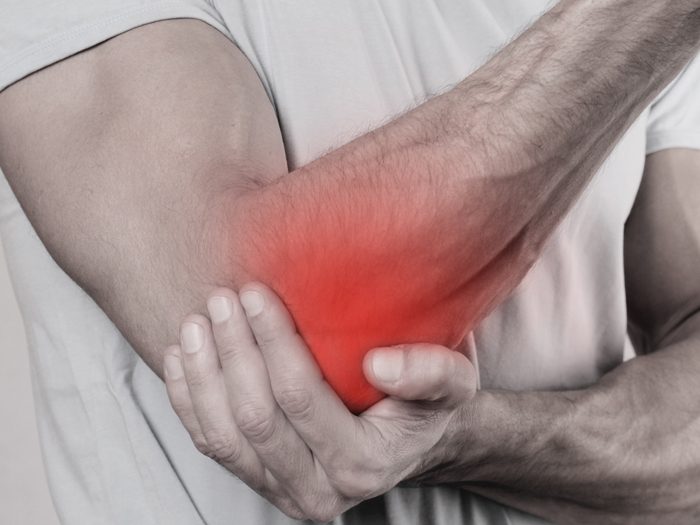Injury Prevention
Sensors Show Promise for Recovery and Prevention

Emerging technologies in biomechanics offer huge promise for the workers’ compensation world.
Take the Motus Pro: a multi-sensor training tool that tracks the throwing and batting movements of baseball players, particularly those who are rehabilitating from injuries.
Developed by the Massapequa, N.Y.-based biomechanics software and analytics firm Motus, the sensor provides feedback to baseball teams’ medical staff to aid in their return-to-play programs.
But the firm has always set its sights beyond baseball, developing its physics engine, hardware and training tools in a manner that would allow the firm to eventually address the larger population beyond athletes, said co-founder and chief executive Joe Nolan.
“We are starting to work on early projects with partners outside the world of sports to refine applications that can be applied to worker safety, human performance optimization and evidence-based, quantified-outcome physical therapy programs,” Nolan said.
There are dozens more products like the Motus Pro that could have a place in the workers’ comp industry, including some of the wearable technology currently being used in baby sensors and monitors to track fetal movement in the womb, said Zack Craft, vice president of rehab solutions, complex care education at One Call Care Management in Jacksonville, Fla.
Wearables could be used in the ergonomics space to potentially prevent carpel tunnel syndrome by monitoring the position of the elbow, total muscles used and the speed of muscles being used by employees during the workday, Craft said.
If a worker has already filed a claim for carpel tunnel, the tool could be used to monitor appropriate positioning and could validate recommendations and potential retraining by providing solid outcome data.
“The small sensor is easily attached using a plastic clip on a glove or through the use of a compression garment,” he said. “For individuals working in an office environment, a very simple postural device can really help them learn to avoid poor positions and improve their posture.”
Wearable technology also has the potential to benefit clinical studies, Craft said. An example is the impact wearables can have on paraplegic patients in the prevention of shoulder injuries such as rotator cuff damage.
Sensors could be used to evaluate the movements of paraplegics in wheelchairs to determine whether they are properly forming a full propelling stroke to avoid damage to their wrist or shoulders.
“This data could then be collected and used to educate the injured worker and any caretakers to prevent the development of bad habits, or to help them relearn appropriate movements,” he said.
“Prevention of these types of injuries is key for paraplegics since the use of their shoulders is critical to complete transfers and pressure shifts.”
Apple recently announced an enhancement to its new Health app to assist wheelchair users in tracking their wheelchair propelling strokes as well calorie burn, periodically reminding them to stay active and take a “roll” around the block, Craft said.
“Wouldn’t it be great if we were able to get an injured worker in physical therapy to upload their exercise information to their workers’ comp treating doctor and claims manager, to see if they were meeting their daily goals?” — Dr. Teresa Bartlett, SVP, medical quality, Sedgwick Claims Management Services
Kathryn L. Havens, assistant professor of clinical physical therapy at the University of Southern California’s Division of Biokinesiology and Physical Therapy in Los Angeles, said that sensors have many great applications, but the difficulty is processing and interpreting all of the data.
Havens has had many discussions with other biomechanists about how to detect certain movement patterns from these velocities and accelerations, because the output from sensors “isn’t so straightforward.”
“I think there is potential and engineers are developing better algorithms for this,” she said. “But at this point we still need trained movement scientists to analyze the data from these sensors in order for the data to be useful.”
Dr. Teresa Bartlett, senior vice president, medical quality at Sedgwick Claims Management Services Inc., believes that technology will eventually be interspersed throughout all of medicine.
“In fact, I am looking for a client that wants to engage some wearable technology in a workers’ comp setting,” Bartlett said. “There are large manufacturers that could benefit from a health and safety perspective.”
Preventing Claims
Bartlett believes there is a place for such emerging technologies in a manufacturing setting to help prevent worker injuries. For example, sensors could be used by people to prevent elbow and shoulder injuries, to understand mechanics, thrust and the amount of energy it takes to perform certain jobs.
Moreover, existing technologies like the Apple Watch or Fitbit could help mitigate low back strain by getting workers to walk more during the day, Bartlett said.
“Wouldn’t it be great if we were able to get an injured worker in physical therapy to upload their exercise information to their workers’ comp treating doctor and claims manager, to see if they were meeting their daily goals?”
It would also help practitioners better understand if injured workers are being compliant with the quality of their exercise programs and to understand duration and intervals, she said.
For example, practitioners could determine whether workers are walking only in small increments such as one-minute intervals to the bathroom, whether they are walking five miles in one exercise period, or whether they’re walking five miles in one-mile increments.
“This information could make a big difference in their treatment plan and discussion with their doctor or nurse case manager,” Bartlett said.












